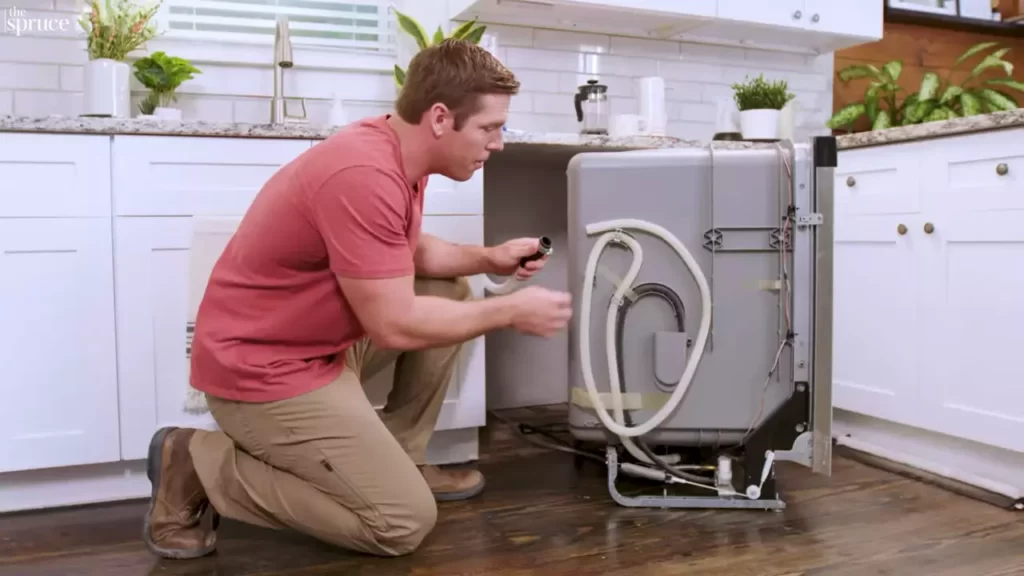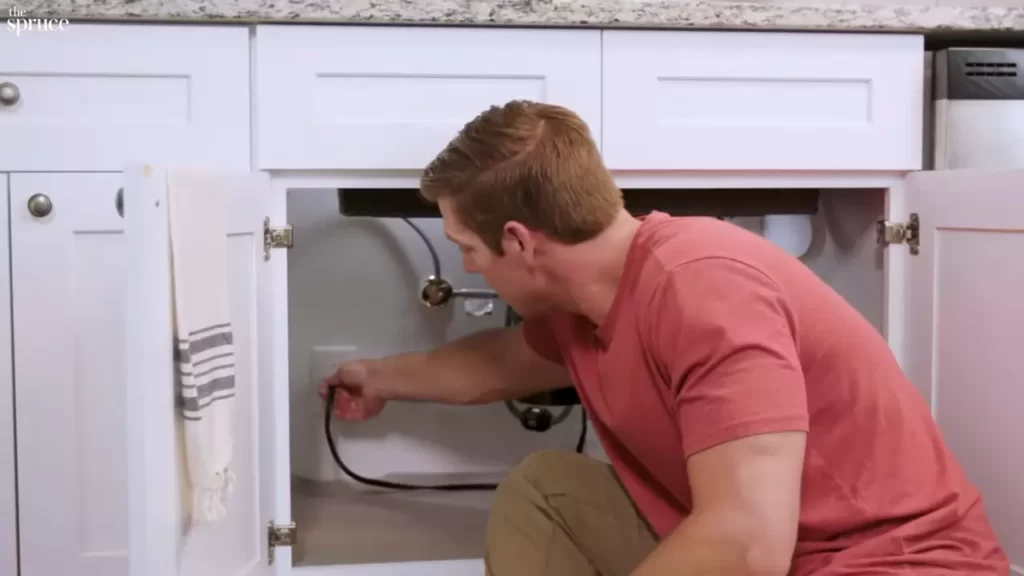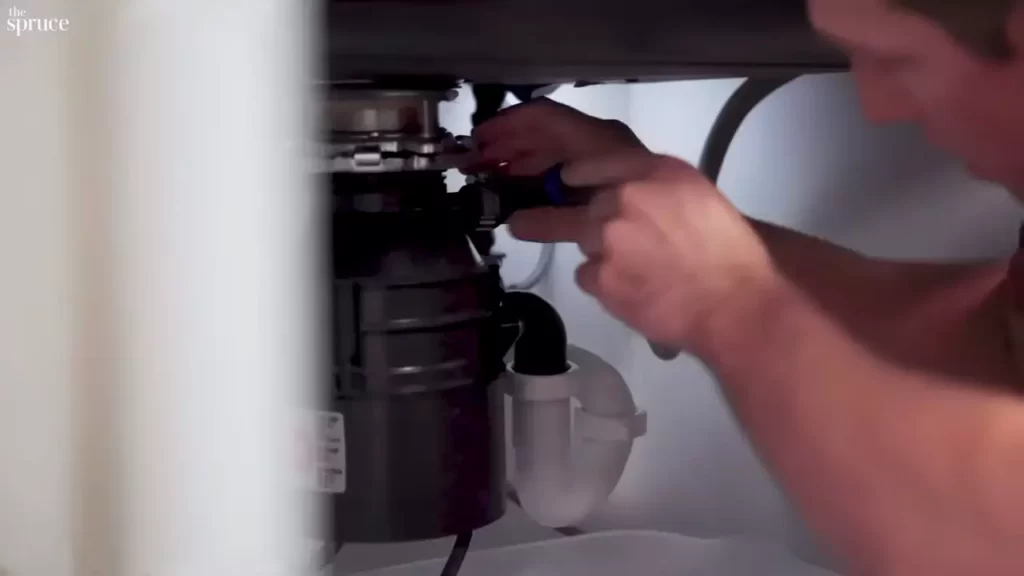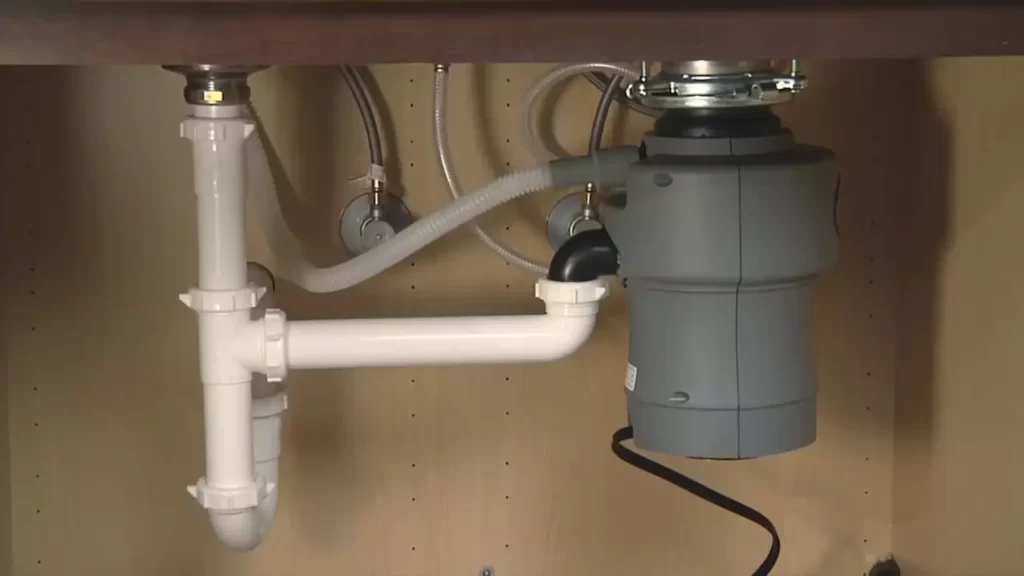To install a garbage disposal with a dishwasher, connect the dishwasher drain tube to the disposal’s drain pipe. When installing a garbage disposal and connecting it to a dishwasher, it is important to ensure proper drainage.
By connecting the dishwasher drain tube to the disposal’s drain pipe, you can effectively manage waste disposal. This process allows for the efficient removal of food particles and waste from the dishwasher, preventing clogs and ensuring a smooth functioning system. Proper installation will not only enhance the convenience of your kitchen but also promote a clean and hygienic environment.
We will guide you through the steps to successfully install a garbage disposal with a dishwasher, offering you a hassle-free and efficient solution.
Choosing The Right Garbage Disposal For Your Dishwasher
When it comes to installing a garbage disposal with a dishwasher, one of the first steps is selecting the right garbage disposal unit for your needs. With numerous options available in the market, it can be overwhelming to figure out which one is the best fit for your kitchen. In this section, we will discuss the various factors to consider when choosing a garbage disposal unit for your dishwasher. These include power and horsepower ratings, noise levels, size, and capacity, as well as additional features and technologies.

Factors to Consider When Selecting a Garbage Disposal Unit
Choosing the right garbage disposal for your dishwasher requires careful consideration of several factors. Doing so will ensure that you have a unit that meets your needs and performs well. The following are some key factors to keep in mind:
Power and Horsepower Ratings
The power and horsepower ratings of a garbage disposal unit are a crucial aspect to consider. Higher power and horsepower ratings generally indicate a more efficient and powerful unit. This means it can handle tougher food waste and operate more smoothly. When selecting a garbage disposal for your dishwasher, look for models with at least 0.5 to 1 horsepower for optimal performance and reliability.
Noise Levels
Nobody wants a noisy garbage disposal unit disturbing the peace in their kitchen. Therefore, noise levels are another important factor to evaluate when choosing a garbage disposal for your dishwasher. Some models are designed with advanced noise reduction technologies, such as insulated grinding chambers or sound seals, to minimize noise during operation. Consider opting for a unit with low noise levels to maintain a peaceful and quiet kitchen environment.
Size and Capacity
The size and capacity of the garbage disposal unit should also be taken into account. The unit should fit comfortably under your sink without obstructing other fixtures or plumbing. Additionally, consider the size of your dishwasher and the amount of food waste your household generates. Pick a garbage disposal unit that can handle the desired load capacity without clogging or causing any issues.
Additional Features and Technologies
Many garbage disposal units come with additional features and technologies that can enhance their performance and convenience. Look for features like automatic reverse function, jam sensor technology, or easy installation processes. Additionally, some units offer energy-saving options, such as energy-efficient motors or power-saving modes. Assess these extra features and technologies to find a garbage disposal unit that best meets your specific requirements.

Preparing For Installation
Before you can start installing a garbage disposal with a dishwasher, you need to make sure you have all the necessary tools and materials. This will help ensure a smooth and efficient installation process, without any unnecessary delays. Here is a list of everything you’ll need:
Gathering the necessary tools and materials
Here is a list of the tools and materials you’ll need:
| Tools | Materials |
|---|---|
|
|
Turning off the power and water supply
Before you start any work, it’s crucial to turn off the power and water supply to the area you’ll be working in. This will help prevent any accidents and ensure your safety throughout the installation process. Locate the circuit breaker for your kitchen and flip the switch to cut off the power supply. Additionally, find the shut-off valve for the water supply and turn it off to avoid any leaks or water damage.
Clearing the area under the sink
Clearing the area under the sink is vital to create enough space for the garbage disposal and dishwasher connection. Remove any objects or clutter that may be in the way, and ensure there are no obstructions blocking your access. By having a clean and organized workspace, you’ll be able to work efficiently and minimize any potential hazards during the installation.
By gathering all the necessary tools and materials, turning off the power and water supply, and clearing the area under the sink, you’ll be well-prepared for the installation of your garbage disposal with a dishwasher. Following these steps will help ensure a successful and hassle-free installation process. Now that you’re ready, let’s move on to the next steps in the installation guide.

Installing The Garbage Disposal And Dishwasher Connection
Removing the drain cover and mounting flange
To begin the installation of your garbage disposal and dishwasher connection, start by removing the drain cover and mounting flange from your sink. This will allow you access to the drain pipe for an easy and secure connection. Use a screwdriver to loosen the screws holding the drain cover in place. Once the screws are loose, remove the drain cover and set it aside. Next, locate the mounting flange which is attached to the drain pipe. Loosen the screws holding the mounting flange in place and carefully remove it from the drain pipe. Set the mounting flange aside as well.
Attaching the mounting assembly and placing the disposal unit
Now that you have removed the drain cover and mounting flange, it’s time to attach the mounting assembly of the garbage disposal unit. Take the mounting assembly and place it over the drain opening in the sink. Make sure the mounting tabs of the assembly align with the three mounting holes on the disposal unit. Once aligned, use the provided screws to secure the mounting assembly to the disposal unit. Tighten the screws firmly to ensure a stable connection.
After attaching the mounting assembly, lower the disposal unit into the sink opening. Make sure the mounting tabs of the assembly fit securely into the mounting ring on the sink. Rotate the disposal unit clockwise to lock it into place. Ensure that the unit is aligned properly and centered in the sink opening.
Connecting the dishwasher drain hose
To connect the dishwasher drain hose to the garbage disposal unit, locate the dishwasher inlet on the side of the disposal. It is usually marked with an “D” or “D/W.” Take the dishwasher drain hose and attach it to the inlet. Secure the connection by tightening the hose clamp with a screwdriver. Ensure that the clamp is tight enough to prevent any leaks.
Securing the disposal unit in place
With the disposal unit and dishwasher drain hose connected, it’s time to secure the unit in place. Underneath the sink, locate the mounting ring and mounting screws provided with your disposal unit. Position the mounting ring over the assembly tabs and align the holes. Insert the mounting screws through the holes in the mounting ring and tighten them using a screwdriver or an adjustable wrench. Make sure the disposal unit is stable and does not wobble when you touch it.
Wiring the garbage disposal to the electrical supply
Before wiring the garbage disposal, ensure that the power is turned off at the circuit breaker. Locate the electrical junction box on the disposal unit. Remove the cover of the junction box and strip the insulation from the wires. Connect the supply wires to the corresponding wires in the junction box using wire connectors. Secure the wire connectors tightly to ensure a safe and reliable electrical connection. Once the wiring is complete, replace the junction box cover.
Testing the installation and checking for any leaks
With the garbage disposal and dishwasher connection installed, it’s time to test the installation and check for any leaks. Turn on the water supply and let water flow into the sink. Then, turn on the garbage disposal and listen for any unusual noises or vibrations. Run water down the drain and check for any leaks in the connections or pipes.
If you notice any leaks, tighten the connections or replace any faulty components. Once everything is working properly and there are no leaks, your garbage disposal and dishwasher connection installation is complete. Enjoy the convenience of a fully functional kitchen appliance setup!
Remember to refer to the manufacturer’s instructions specific to your garbage disposal unit and dishwasher for any additional guidance throughout the installation process.

Maintaining And Troubleshooting
Regular maintenance tips to keep your garbage disposal and dishwasher functioning properly
Regular maintenance is crucial to keeping your garbage disposal and dishwasher in optimal condition. By following these simple tips, you can prolong the lifespan of your appliances and avoid costly repairs.
- Run cold water while operating the disposal: Always remember to run cold water while using the garbage disposal. This helps in flushing down the food particles and prevents clogs in the drainage system. Cold water also keeps the motor from overheating, ensuring efficient operation.
- Avoid common items that can damage the disposal: It’s important to know what you can and cannot put in your garbage disposal. Avoid disposing of hard items like bones, fruit pits, and hard shells, as they can damage the blades. Also, avoid pouring grease, oil, or fat down the drain, as they can solidify and clog the pipes over time.
- Clean the disposal unit regularly: Regular cleaning is vital to maintain a hygienic and odor-free garbage disposal. To clean the unit, you can mix baking soda and vinegar, and pour it down the drain. Let it sit for a few minutes before rinsing it with cold water. This will help remove any buildup and eliminate unpleasant odors.
Troubleshooting common issues
Even with regular maintenance, you may encounter some common issues with your garbage disposal and dishwasher. Here are a few troubleshooting tips to help you address these problems:
- Jammed disposal: If your garbage disposal gets jammed, it’s important to first turn off the power. Use a flashlight and look for any objects causing the obstruction, such as food debris or foreign objects. If you can see the object, use a pair of tongs or pliers to carefully remove it. Avoid using your hands to prevent injury. Once the obstruction is removed, press the reset button on the disposal unit and turn the power back on.
- Leaks or drips: If you notice any leaks or drips around your garbage disposal or dishwasher, it’s essential to identify the source of the problem. Check the connection points and ensure they are tight and secure. If there are cracks or damage to the plumbing or appliance, you may need to replace the affected parts. If the issue persists, it’s best to consult a professional plumber for assistance.
- Strange noises: Unusual noises from your garbage disposal or dishwasher can indicate a problem. Grinding or rattling sounds may mean there is an object caught in the disposal or dishwasher. Turn off the power and inspect the unit for any obstructions. If you don’t find anything, the motor or other internal components may require professional attention.
- Foul odors: If your garbage disposal or dishwasher emits unpleasant odors, it’s important to address the issue promptly. Regularly cleaning the unit, as mentioned earlier, can help eliminate odors. You can also try running a few lemon or orange peels through the disposal to freshen it up. Additionally, pouring a mixture of baking soda and vinegar down the drain can help neutralize any lingering odors.
By following these regular maintenance tips and troubleshooting common issues, you can ensure your garbage disposal and dishwasher stay in excellent working condition for years to come. Remember to contact a professional if you encounter any complex problems or are unsure about handling certain repairs.
Frequently Asked Questions Of How To Install A Garbage Disposal With A Dishwasher
Can I Connect My Dishwasher Directly To Garbage Disposal?
Yes, it is possible to connect your dishwasher directly to the garbage disposal. Ensure that both appliances have the necessary connections, such as a drain hose and a hook-up for the dishwasher. Professional installation or guidance may be required for proper setup.
How Do You Connect A Dishwasher Drain Hose To A Garbage Disposal?
To connect a dishwasher drain hose to a garbage disposal, locate the dishwasher inlet port on the disposal unit. Remove the knockout piece or plug from the port using pliers or a screwdriver. Then, attach the dishwasher drain hose to the inlet port, securing it with a hose clamp.
Does Garbage Disposal Need To Be On the Same Side As Dishwasher?
No, it is not necessary for the garbage disposal to be on the same side as the dishwasher. You have the flexibility to install them on different sides based on your kitchen layout and requirements.
How Do I Install A Garbage Disposal With A Dishwasher?
Installing garbage disposal with a dishwasher involves connecting the drain line from the dishwasher to the disposal unit. You will need to remove the knockout plug, install the mounting bracket, attach the disposal unit, connect the drain pipes, and test for leaks.
Following the manufacturer’s instructions is crucial for a successful installation.
Conclusion
To sum up, installing a garbage disposal with a dishwasher is a practical and convenient solution for any kitchen. By following the step-by-step instructions provided in this blog post, you can ensure a smooth and efficient installation process. Remember to use the right tools, take safety precautions, and consult a professional if needed.
With a functioning garbage disposal and dishwasher combination, you can enjoy a cleaner and more hassle-free kitchen experience.
